I’ve received many inquiries over the past six to eight months from cow-calf producers asking if they should be expanding their cow herd. Producers are asking whether they should try to get another calf out of the older cows and how aggressive they should be with heifer retention. In my experience, cow-calf producers do not […] Read more

Should I expand the cow herd?
Market Talk with Jerry Klassen
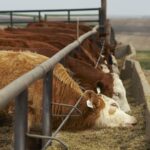
Klassen: Stronger fed cattle prices underpin feeder complex
Limited feed and forage hinder further upside
Alberta packers were buying fed cattle on a dressed basis in the range of $265-$270 delivered this past week, up $3-$5 from seven days earlier. Live prices were quoted at $159-$162 delivered using a 60 per cent grading. If the feedlot operator booked their feed grains earlier in winter, live prices are $2-$3 above breakeven […] Read more
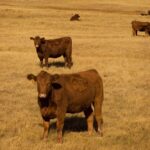
Klassen: Cattle producers facing drought-like conditions
Alberta packers were buying fed cattle on a dressed basis in the range of $262-$265 delivered this past week. Using a 60 per cent grading, the live price would be in the range of $157-$159. If a feedlot booked the bulk of its feed grains earlier in winter, feeding margins are now hovering in positive […] Read more
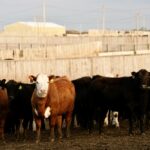
Klassen: Feeder cattle divorce from futures’ direction
Compared to last week, western Canadian feeder cattle prices were relatively unchanged. Higher-quality yearlings and calves were steady to $4 higher in Alberta and Saskatchewan; in Manitoba, yearlings traded $2-$4 lower while calves were $3-$5 higher. Domestic cattle markets appeared to divorce from feeder and live cattle futures. June live cattle futures finished the week […] Read more
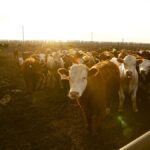
Klassen: Feeder cattle markets experience volatility
Beef prices encourage slaughter pace
Compared to the previous week, western Canadian feeder cattle markets traded $3-$4 on either side of week-ago levels. Prices were quite variable across the Prairies with four main factors influencing buyer sentiment. First, the eastern Prairie regions experienced adverse winter weather. Auction barns in Manitoba and eastern Saskatchewan had smaller volumes on offer. Buyers shied […] Read more
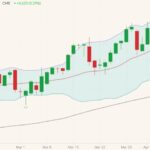
Klassen: Stronger demand drives feeder market
Compared to last week, western Canadian yearling prices were $3 to as much as $6 higher, but calf prices were relatively unchanged. Major feedlot operators were very aggressive on heavier calves and yearlings weighing 700-850 lbs. Yearlings over 850 lbs. were also well bid but not as strong as their lighter-weight counterparts. Feed barley prices […] Read more
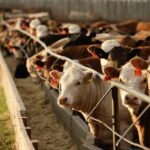
Feeder cattle supplies tightening
Market Talk with Jerry Klassen
In my previous article, I mentioned that the USDA made a downward revision to the 2019 calf crop while the 2020 calf crop came in lower than expected. Since then, Statistics Canada has also released their cattle inventory report. It appears that western Canadian calf and yearling supplies as of January 1, 2021, were down […] Read more

Klassen: Feeder market digests USDA acreage report
Compared to last week, western Canadian feeder cattle markets were relatively unchanged. Lower flesh yearlings appeared to trade $2-$3 higher in certain pockets of Alberta but replacements carrying excessive butter experienced severe discounts of $6 to as much as $10 in some cases. October and December live cattle futures made fresh contract highs, which underpinned […] Read more
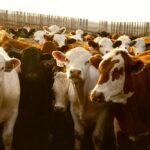
Klassen: Feeder cattle market exhibits defensive tone
March 30 — Compared to the previous week, western Canadian feeder cattle markets traded steady to $3 lower on average. Alberta packers were buying fed cattle on a dressed basis in the range of $245-$249 delivered, down from the average value of $250 seven days earlier. Deteriorating feeding margins set a negative tone for the […] Read more
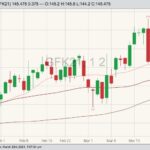
Klassen: Feeder market remains volatile
Feed grain values remain firm
Last week, western Canadian yearling markets were traded $2-$4 above week-ago levels from Monday through Wednesday; however, buyers backed away from the market on Thursday and Friday as feeder cattle futures fell nearly $7 from Wednesday’s high. By the end of the week, yearlings were relatively unchanged from week-ago levels. Calf prices were relatively flat […] Read more


